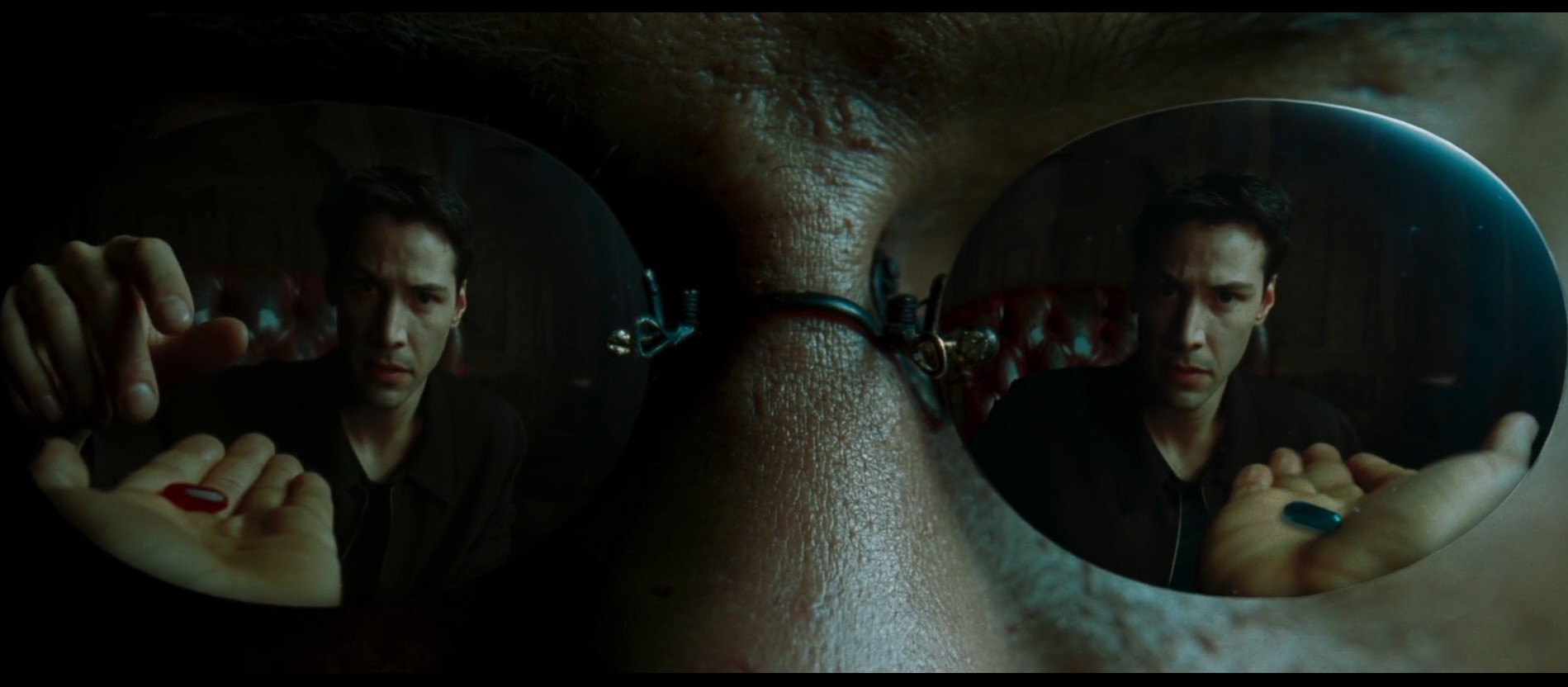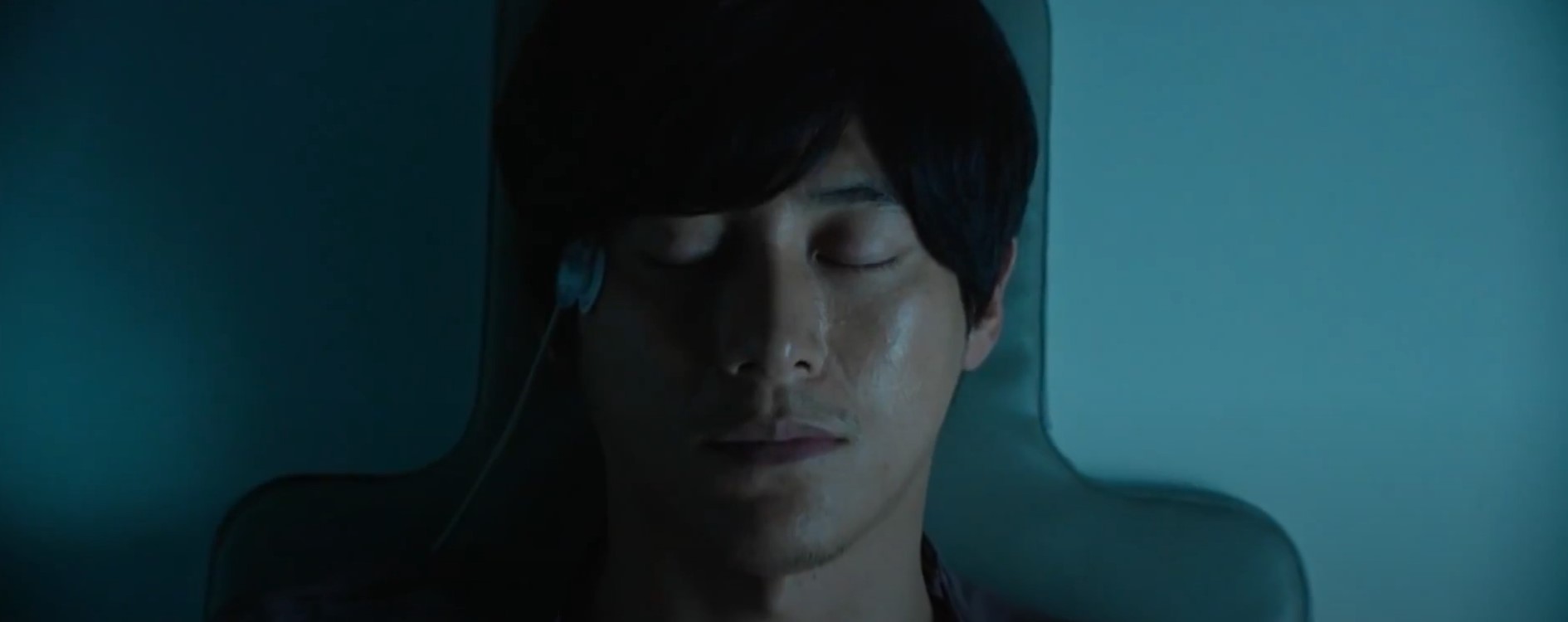The movie The Matrix explores the question of which world we choose to live in and how that choice affects our existence and identity.
In the movie The Matrix, two worlds exist. There’s the real world, where you can take the red pill, and there’s the virtual world, where you can take the blue pill. These two worlds pose philosophical questions that explore the familiar boundaries between reality and fantasy, reality and fiction, and the following assumptions are made in the choice. First, virtual reality and physical reality are perfectly consistent. The virtual world doesn’t allow you to use your powers differently than in the real world, but rather you are given the same conditions and environment as in the real world. Second, after making a choice, the memory of the choice is erased, and you are not aware of what world you are living in.
In this situation of choice, there is no difference between the real world and the virtual world, and therefore the real world is not more valuable than the virtual world. So I don’t think there’s any reason to choose the real world, and it starts with two assumptions.
The first assumption is that virtual reality and real life are perfectly consistent, so the conclusion that virtual reality is more imperfect because it is a world created by a computer program is contradictory. If virtual reality is a world created by a computer program, then the real world is also a world created by a program, and if the real world is not created by a computer program, then the virtual world is not created by a computer program. Thus, for example, any claim that the real world is comparatively superior to the virtual world because there is some difference between the two worlds, comparing the real world and the virtual world to authenticity and replica, respectively, is contradicted by the first assumption.

Before explaining the second assumption, we will use the analogy of the dreams we have when we sleep to make it easier to understand the assumed difference between the real world and the virtual world. Lucid dreaming, also known as lucid dreaming, was first coined by a Dutch doctor in 1913. Lucid dreaming literally means that you are aware of your dreams, and it’s not the same as dreaming as we usually experience. Usually, when we wake up from a nightmare, we see ourselves with a sweaty pillow and a sigh of relief. At that moment, we separate the dream from the real world. To be more specific, the sweat on the pillow tells us that we have not been able to distinguish between dreams and reality, and when bad things happen, we feel sad and distressed as if they happened in real life, while the sigh of relief tells us that we now recognize that they are virtual. In this way, when a person dreams, he or she does not recognize whether it is a dream or reality, but in the ‘lucid dream’ state, he or she recognizes that it is a dream at the moment of dreaming, which allows him or her to have various experiences that he or she has not had in reality. Therefore, it can be seen that there is a third state, ‘lucid dream’, other than the dream and reality that we usually distinguish.

Through this dream state, we realize that the line between virtual and real is more blurred than we think. When the line between virtual reality and real life is blurred, we can become confused about what is real and what is fiction. However, as suggested in the movie The Matrix, this confusion disappears after a choice is made and memories are erased. This is similar to the intersection of virtual reality and the different realities we experience in our daily lives. For example, when we play a virtual reality game, we know it’s not real, but while the game is going on, it feels like it is. Only after the game is over do we realize that it was virtual. When the line between virtual reality and physical reality is blurred in this way, we experience a new form of reality within it.

So, where do the real and virtual worlds in the movie fall among the three states of reality, normal dreams, and ‘lucid dreams’? The real world chosen by the red pill is the state of reality where we don’t dream. The virtual world, chosen by the blue pill, is the one we usually dream about, where we accept it as real and feel and act as if it were real. It’s important to note that virtual worlds are ordinary dreams, not lucid dreams, because thinking about ordinary dreams addresses many of the concerns we have about virtual worlds. First of all, human dignity is not violated in virtual worlds. Because we usually live in a world with many laws and rules that we have to abide by, we are free to act in a lucid dream, a dream state in which we are aware that we are dreaming, and this is how we usually behave in dreams: we accept the dream world as reality and do not act against our conscience, let alone the order of the laws that we follow in reality. Similarly, actions in a virtual world without recognizing that it is a virtual world will not violate human dignity.
Secondly, you worry that a person living in a virtual world would suffer mental disruption if they realized that the place they were living in was virtual, which is contradicted by the second assumption. If you don’t know what world you’re living in, you don’t have to worry about mental confusion because the distinction between worlds disappears after you make a choice. Again, this can be easily understood by analogizing it to a dream situation. When do we usually experience confusion when dreaming? It’s not when we’re dreaming, but that brief moment between waking up and realizing that we’ve been sleeping. Similarly, when you choose between the virtual world and the real world, you don’t experience mental confusion, just as you don’t experience confusion when you’re dreaming or living in the real world, because you don’t know about the existence of either world before or after you make the choice.
In this blurred world, we have to ask ourselves questions about what is real and what is fiction. The movie “The Matrix” asks these questions and makes us think deeply about the nature of human existence. If our experiences in virtual worlds are indistinguishable from reality, where will we find our identity? These are not just philosophical questions, but also practical ones that we will face as technology advances.
So we don’t need to worry about the mental disruption of reality and the possible loss of human dignity. These are only worries that we need to worry about in a virtual world like Lucid Dream, where we recognize that it is virtual, not in a virtual world where we don’t know that it is virtual. It is just as absurd to worry that the world we are living in now, the present moment, might be virtual as it is to worry that the world we are living in now is virtual.
As in the case of virtual worlds, when we are unaware of a hypothetical situation, we can see that it is not so different from reality. We make a lot of assumptions about the past when we’re thinking to ourselves or talking to friends. In particular, friends returning from the military often reminisce about the time before they were in the military and regret that they didn’t focus on their studies and were too busy hanging out. They swear that if they had it to do over again, they would work harder, study more intentionally, and play more intentionally than ever before. Then I always ask myself an additional hypothetical question. I always make an additional assumption: would you do that if you lost all your memories? Once that assumption is made, that confident personality quickly fades away. Regrets about the past are a result of the experiences and emotions we felt during those times, and if we were to go back to the past without those memories, it would be a repeat of the same thing. This is the same as a virtual world without the perception of a virtual world. Living in a virtual world with no perception of the virtual world will produce results that are no different from the real world.
So far, we’ve seen that virtual worlds are not different from the real world from two assumptions. We can see that the distinction between virtual and real worlds is impossible and unnecessary, and that virtual worlds do not have any disadvantages compared to the real world. In other words, the real world has no advantages over the virtual world, so there is no reason to choose between them because the real world is not more valuable than the virtual world.
In conclusion, the two worlds presented in The Matrix go beyond mere philosophical theory and raise questions that are deeply connected to our real lives. No matter which world we choose, within that world we will have to find the meaning of our existence and establish our own identity. The movie is ultimately about choice, but it also asks us to reflect deeply on who we will become after we choose.
 I’m a blog writer. I want to write articles that touch people’s hearts. I love Coca-Cola, coffee, reading and traveling. I hope you find happiness through my writing.
I’m a blog writer. I want to write articles that touch people’s hearts. I love Coca-Cola, coffee, reading and traveling. I hope you find happiness through my writing.